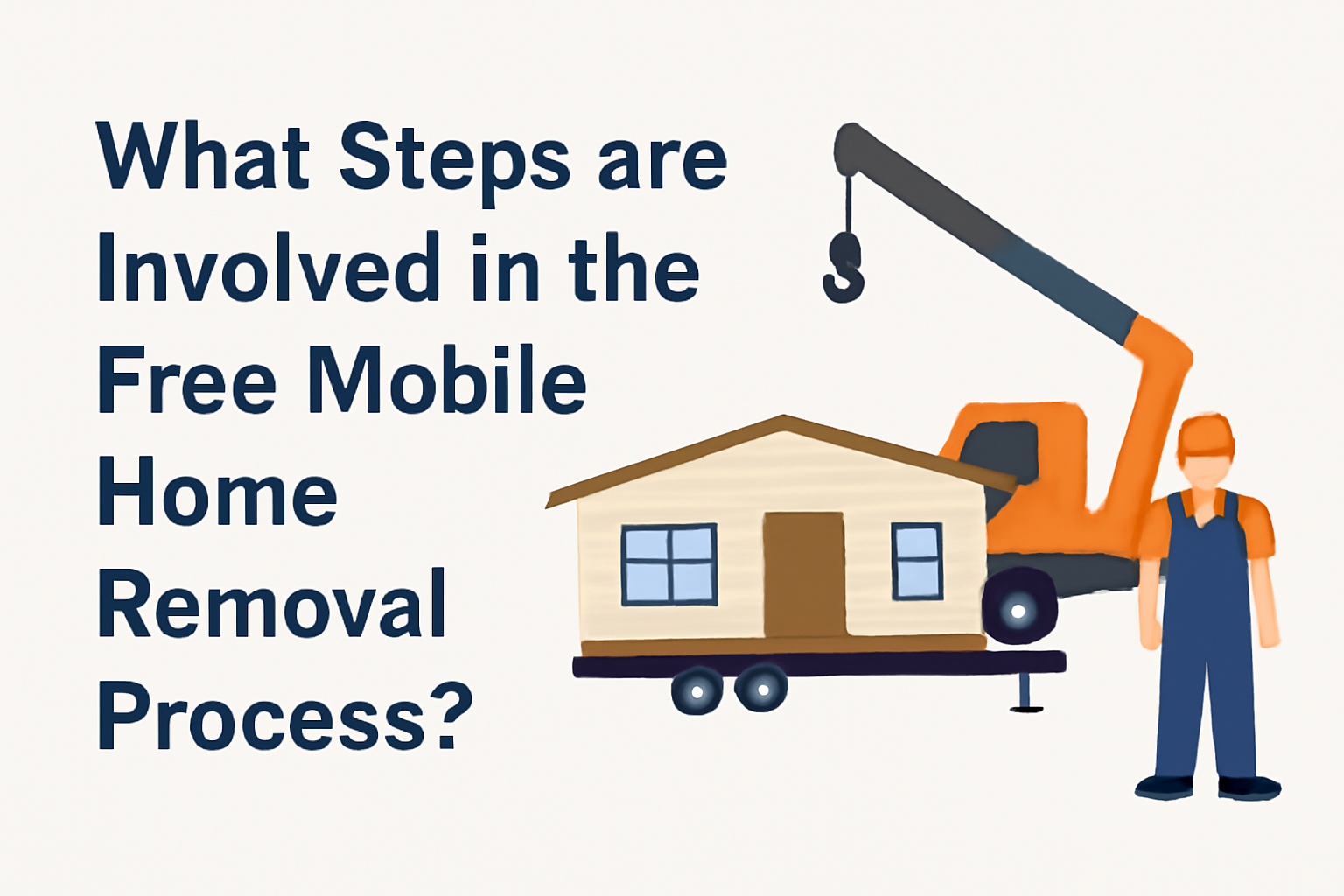Like all buildings, portable properties eventually need to be demolished for they have reached the last stage of their longevity. But what happens to the debris after a mobile home is demolished?
The appropriate handling and disposal of trash significantly impact the environmental sustainability of trash. Texas Mobile Home Removal further explains what happens to the debris after a mobile home is demolished.

What is the Demolition Process?
Determining what happens to the debris after a mobile home is demolished depends on comprehending the entire process. Multiple types of materials are used to build portable residences.
Professional demolition crews methodically disassemble these items during demolition, guaranteeing waste management effectiveness and safety.
The donation of a portable property is appropriate if you are searching for a substitute of its demolition. It enables you to help the needy along with contributing to a worthy charity.
How to Sort Out Debris?
Following demolition, your next task will be to cope up with the debris. Study the regulations so you can complete this task to reduce environmental impact. Properly separating the reusable and non-reusable materials is also guaranteed.
Metal
Steel frames and aluminum sheeting are both very recyclable. They are frequently used in building portable houses. Recycling facilities process these metals to create materials that can be used in new manufacturing and construction.
Wood
Beams and flooring made of wood can be used again if they are in excellent shape. If not, they are either utilized to produce biomass energy or dumped in landfills.
Plastic and Vinyl Waste
Vinyl siding and PVC pipes are recycled or disposed of based on environmental regulations if they are not recyclable.
Insulation and Dangerous Materials
Some insulation materials include dangerous compounds. To avoid damaging the environment, these need to be disposed of using certain techniques.
Read: Do mobile homes depreciate?
Reuse Materials – A Recycling Initiative
An essential component of portable house destruction is recycling. To reduce waste, many demolition businesses try to recycle up to 90% of their products. Materials that are frequently recycled include:
Metal
Metal is processed and reused in settings:
- Industrial
- Automotive
- Construction
Wood
Wood is repurposed for:
- Biomass fuel
- Building supplies
- Furniture making
Plastics
You can reuse plastics to create new materials, including
- Composites
- Insulation
- Pipes
Prioritize recycling to:
- Preserve natural resources
- Reduce landfill waste
- Increase sustainability
Read: How long do mobile homes last?
Disposing Non-Recyclable Debris
Sometimes, with intensive recycling efforts, some of the demolition leftovers may not be recycled. Some materials are considered non-recyclable, such as:
- Roofing components
- Insulation
- Several types of plastic
Landfills receive these items and handle them according to legal requirements. Incineration offers fewer environmental advantages because of emissions. However, it is still employed as a disposal option in specific situations.
Environmental Effect of Mobile Home Demolition
Debris from portable houses may have a significant effect on the environment. Energy is used to transport items to landfills and non-biodegradable garbage.
Reusing and recycling materials are the most sustainable way to reduce environmental damage. These initiatives save significant resources and reduce trash.
Read: How to remove popcorn ceiling in double wide mobile home?
Legalities for Disposal
Government restrictions are vital because they manage the leftovers of demolition. Strict regulations:
- Encourage the recycling of salvageable materials
- Guarantee the safe disposal of hazardous items
- Reduce environmental harm
- Promote appropriate garbage disposal
Mobile Home Demolition Debris Disposal
After demolition, debris disposal follows rigid environmental and safety guidelines. Licensed haulers transport waste to authorized facilities where materials are
- Weighed
- Sorted
- Recorded
Hazardous elements are processed separately. Modern disposal services now use eco-friendly hauling equipment to decrease carbon emissions during transportation.
Recycling Mobile Home Materials
Today’s recycling methods for movable houses materials have evolved with advanced technology. Specialized recycling plants now separate mixed debris using:
- Automated sensors
- Magnetic systems
Aluminum, copper wiring, and steel are melted and repurposed efficiently. Even old insulation and glass panels are being reused for new construction materials or energy-efficient products.
Post-Demolition Cleanup
Post-demolition cleanup assures that the site is safe and prepared for reuse. Professionals conduct final inspections to remove small
- Debris
- Nails
- Hazardous residues
Soil may be tested for contamination before redevelopment. Modern cleanup also includes
- Dust suppression
- Air-quality checks
- Eco-friendly disposal
All these procedures restore the area sustainably and responsibly.
The Bottom Line
Comprehending what happens to the debris after a mobile home is demolished implies that deconstruction waste is not just garbage. It is sifted thoroughly, recycled where it can be, and duly dumped in landfills when needed. The detrimental effects of mobile home deconstruction can be considerably lessened by prioritizing recycling and implementing environmental regulations.
Get the best free mobile home removal near me in Texas, US!

